FoodCycle Foodbank Indonesia /
Improve agility and reduce food waste by maximizing coordination among all players
The goal of the project is to digitize FoodCycle’s foods collection and distribution process by connecting food donors to the logistic partners and underprivileged communities (beneficiaries).
Role
• Research & Analyze
• Define & Conceptualize
• Prototyping (Low & High Fidelity)
Project Type
Volunteer work
Proof-of-concept visualization

The Background
Indonesia is the world's second-largest food waster and awareness on food loss and waste in Indonesia is low. Despite this, tons of edible surplus foods from food-retailers are not properly managed.
FoodCycle Indonesia is a food bank and the only member of The Global FoodBanking Network (GFN) from Indonesia. FoodCycle Indonesia distributes surplus foods from several sources, including FMCG Companies, fast-food Chains, bakeries, wedding parties, and many more to serve underprivileged communities. However, at that moment, the distribution was still conducted manually over personal WhatsApp with no data recorded. With its fast-growing partner, this workflow is ineffective and unprofessional because it is dependent on the owner’s availability.
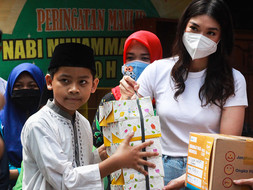

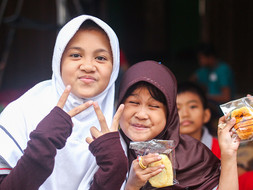
Understanding how food donor partners managing surplus foods.
I conducted a direct interview with 5 FoodCycle’s Food Donor Partners. This qualitative research aimed to understand users’ challenges in dealing with surplus foods and food waste, as well as their cooperation with FoodCycle. Aside from that, the interview intended to validate personal hypotheses and determine the ideal solution. The respondents were:
-
HR of a E-Commerce
-
Founder of a Wedding Organizer
-
CSR Committee of a Food Retail Company
-
Marketing Manager of a Mass Production Bakery
-
Green Committee Team at a FMCG Company
*Companies' name are confidential.
Persona based on research findings.
Quantitative Research
The quantitative data collected was used to justify product improvement decisions and ensure the numbers back the decisions. As for the method, I spread the survey and questionnaires form to 43 respondents who work in Food and Beverage (FnB) field. Here are some of the results collected.
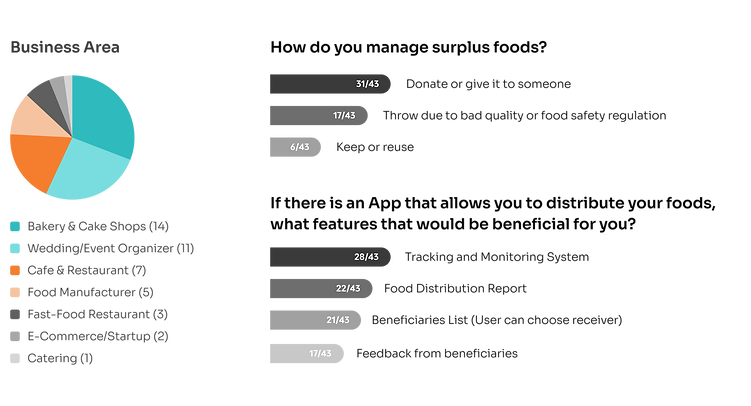
Partners' Pain Point
According to the research, here are some takeaways regarding partners' pain point:
Surplus Food Management
Lack storage space, transportation cost to collect and distribute foods to beneficiaries, and food safety regulation.
FoodCycle Inefficient Workflow
The current manual workflow is time-consuming and considered ineffective to handle coordination with a larger number of partners.
Rework Service Journey
From the pain points listed above, I digitized FoodCycle service journey to connect food donors to the logistic partners and underprivileged communities in one system for optimal coordination.
Current Journey

Digitized Journey

Low-Fidelity Sketches
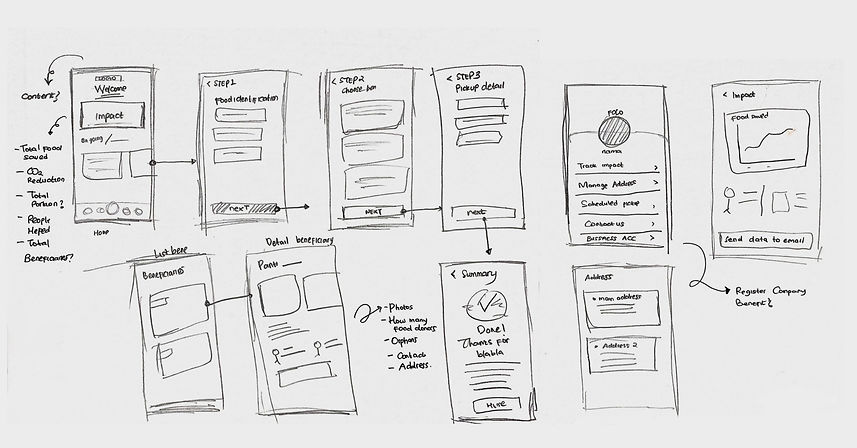
Final Interface Designs
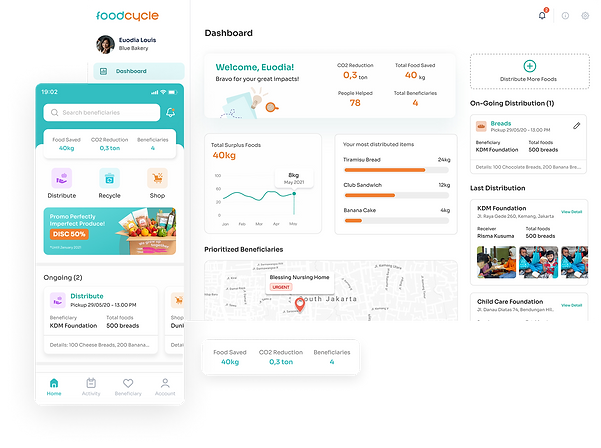
Homepage and Web Dashboard
Highlights user's positive impact summary in order to encourage them to step forward. Besides, it is intended to boost engagement and create a better product experience.
Food Identification Form and Beneficiaries List
To ensure the food's quality, the user must fill out the food identification form in the same way as with the manual process. In addition, we allow users to select the beneficiary to improve transparency.

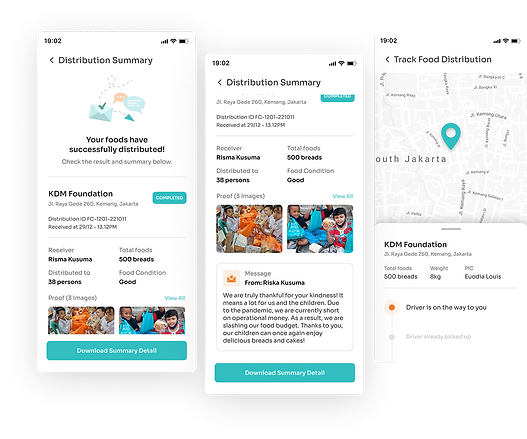
Tracking System and Food Distribution Report
The report aims to answer user's needs of distribution proof and to keep user informed and in control. In addition the summary allow user to have two-way communication with food donor.
